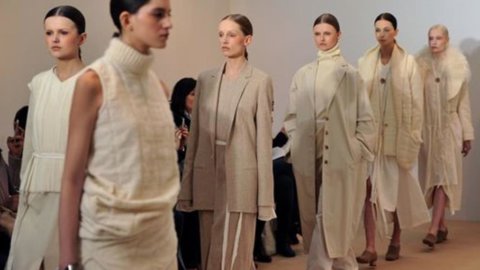The global fashion industry will continue to grow in 2018. Sales are expected to increase by an average of 3,5% to 4,5% and reach 2.500 trillion dollars. Up compared to the estimates for 2017, equal to 2,5-3,5%, and more than three times the value recorded in 2016, however remaining below the long-term average of 5,5%. The profit margin (pre-tax) of the sector is expected to remain stable at 10%. These are the predictions of the new The State of Fashion 2018 report created by The Business of Fashion and McKinsey & Company.
This new growth will be driven primarily by emerging markets in Asia, Africa, Latin America and Europe. Estimates by BoF and McKinsey show that emerging markets in Asia (including India, Vietnam and China) will achieve revenue growth of between 2018% and 6,5% in 7,5, while European counterparts (such as Romania, Russia and Turkey) will remain slightly behind, with an estimated increase between 5,5% and 6,5%. In contrast, the mature markets of North America and Europe will only grow between 1% and 3%. “In 2018, more than half of global fashion sales will come from new markets in the East rather than established markets in Western Europe and North America,” said Imran Amed, founder and director of The Business of Fashion (BoF). “We are at an important inflection point: industry leaders are gearing up to continue growing in an ever-changing environment, with new technologies, new consumers and an unpredictable macro-economic scenario, which requires them to rapidly change strategies and operating models".
Greater polarization between winners and losers
The creation of value in companies changes profoundly in the current market context, which is undergoing rapid transformation: according to what emerges from the McKinsey Global Fashion Index, fashion companies belonging to the first quintile generate 144% of the sector's overall profits. “Leaders grow faster and more profitably. The situation is very different if we look at the bottom quintile, which even destroys value,” said Antonio Achille, Senior Partner and Global Head of Luxury at McKinsey.
Trends that will shape the industry in 2018
The report identifies ten trends that will have a significant impact on the fashion industry in the coming year. Some will be the result of developments in the world economy, such as Asia's role as a pioneer
in technological innovation. The countries of this continent have long overtaken Western markets in this area: more than half of global online sales and two-thirds of e-commerce unicorns – startups whose valuation exceeds a billion dollars – come from Asia. Other trends will instead be created by consumers: these include the continued growth of online platforms, with which traditional retailers struggle to keep up. “Brands and retailers have stopped questioning whether or not to collaborate with online platforms. Now their focus is on the most effective ways to do it, starting winning partnerships”, added Antonio Achille.
A third of the sector managers interviewed believe that the dominance of online platforms will be one of the main trends defined by consumers in 2018. Additional trends refer to the fashion system itself and concern the growing importance of sustainability and the benefits of artificial intelligence to the throughout the value chain. “Fashion is lagging behind other industries in terms of its use of artificial intelligence, even though it has understood its importance. 20% of the executives interviewed believe that this area will play a fundamental role in the future as a tool for reinventing design, merchandising and marketing”, said Antonio Achille.





